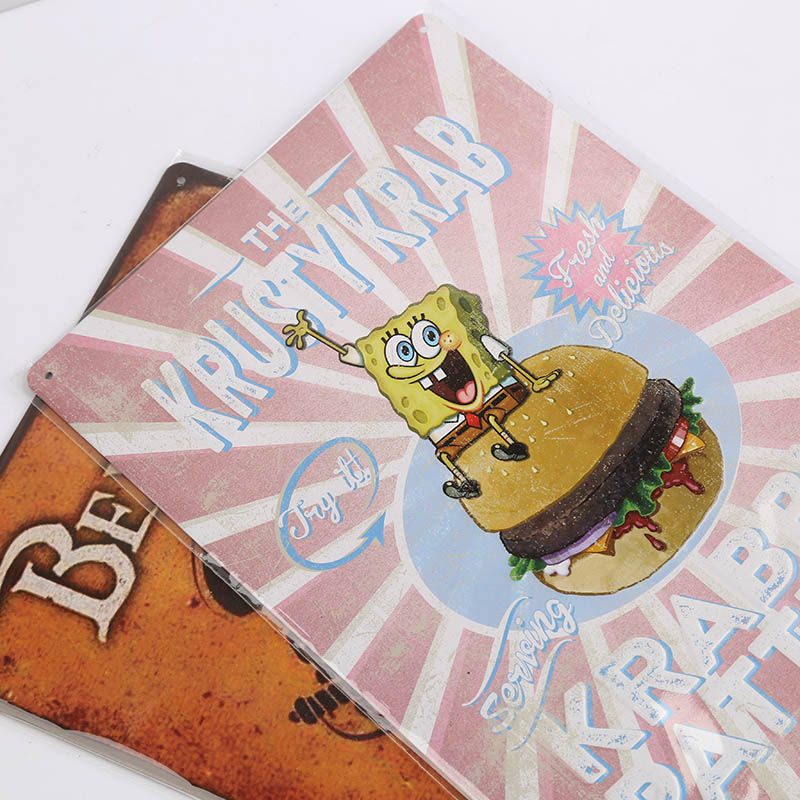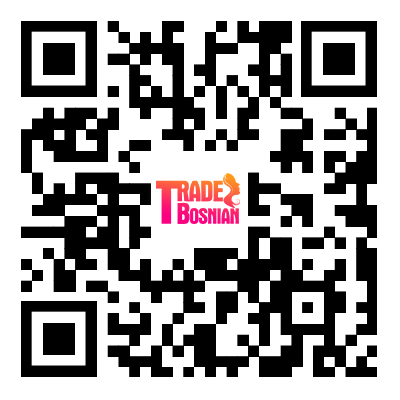Why Are Aluminum and Tin Signs Still Popular in Modern Design?
2024-12-13
In today's digital age, where screens and virtual environments dominate, it may seem surprising that traditional materials like aluminum and tin continue to hold a significant place in the world of signage and decor. These metal signs have been around for decades, but they are still incredibly popular in modern design. Why do these materials continue to be a favorite choice for businesses, homes, and collectors alike? What makes aluminum and tin signs so timeless and appealing?
In this blog, we'll explore the enduring popularity of aluminum and tin signs, examining their unique advantages, versatility, and why they remain a top choice for both decorative and functional purposes.
What Are Aluminum and Tin Signs?
Aluminum and tin signs are a type of signage made from these metals that are often used for advertising, branding, or decorative purposes. These signs can be either printed or embossed with designs, logos, or messages, making them versatile for a range of uses. Aluminum signs are typically lightweight and durable, while tin signs, often made of steel with a tin coating, offer a vintage look that many find nostalgic and charming.
Both types of signs have been a staple in businesses, homes, and outdoor settings for many years, serving not only as tools for communication but also as pieces of artwork that evoke a sense of style and character.
Why Do Aluminum and Tin Signs Continue to Be Popular?
1. Durability and Longevity
One of the main reasons why aluminum and tin signs remain popular is their durability. Both metals are resistant to rust and corrosion, especially when coated or treated, which makes them ideal for both indoor and outdoor use. Aluminum signs, in particular, are lightweight yet incredibly strong, able to withstand harsh weather conditions like rain, snow, and intense sunlight.
Tin signs, though prone to scratching, are often treated with a protective coating that enhances their longevity. Their sturdiness ensures they can stand the test of time, maintaining their appearance and functionality for years to come. This makes both types of signs an excellent long-term investment, whether you're using them for advertising or decoration.
2. Aesthetic Appeal
Both aluminum and tin signs offer a unique aesthetic appeal that is hard to replicate with other materials. Tin signs, especially those that are distressed or have a vintage finish, evoke a sense of nostalgia and charm that instantly adds character to any space. These signs often feature retro designs, logos, or advertisements that capture the essence of past decades, making them particularly popular for home decor, bars, restaurants, and vintage shops.
Aluminum signs, on the other hand, offer a more modern, sleek appearance while maintaining the durability and strength of metal. They can be custom-designed to match any branding or personal aesthetic, from bold, colorful designs to minimalist styles, making them versatile in both commercial and personal spaces.
3. Versatility in Usage
Aluminum and tin signs are highly versatile, serving a range of functions across various industries and environments. They are widely used in retail and business settings as advertising tools, helping companies promote products, services, and brands. For example, you'll often find aluminum signs outside of restaurants, cafes, and bars, showcasing their name, hours of operation, or special promotions.
In homes, tin signs are commonly used as decorative pieces, hanging in kitchens, living rooms, or garages to add personality to the space. Many people enjoy collecting vintage tin signs, which often feature advertising for long-gone brands or products. Meanwhile, aluminum signs are often used in more functional roles, such as street signs, safety signs, and directional signs, owing to their weather resistance and strength.
4. Customization Options
Both aluminum and tin signs offer excellent opportunities for customization. Whether you're looking for a sign that reflects your brand's identity, a personalized message for your home, or a nostalgic piece to add character to a space, these materials can be easily customized.
Aluminum signs can be produced in a range of sizes, colors, and finishes, including matte, glossy, or brushed, allowing you to achieve the exact look you're going for. Tin signs, while more traditional in appearance, can be printed with almost any design or logo and come in various shapes and sizes. This level of customization ensures that these signs can meet the unique needs of any project, whether for personal or commercial use.
5. Eco-Friendly and Recyclable
In an increasingly eco-conscious world, aluminum and tin signs have the added benefit of being recyclable. Aluminum, in particular, is one of the most recycled materials globally, and opting for aluminum or tin signs can help reduce your carbon footprint. Recycling these materials helps conserve natural resources and energy, making these signs an environmentally friendly choice.
Additionally, aluminum signs, when no longer needed, can be melted down and reused, keeping them out of landfills and contributing to a circular economy. This makes them a sustainable option for those looking to make more environmentally responsible choices.
6. Easy Maintenance
Another reason for the popularity of aluminum and tin signs is their easy maintenance. These materials are incredibly simple to clean and maintain, requiring little effort to keep them looking their best. A simple wipe-down with a damp cloth is often enough to remove dirt, dust, or grime. This low-maintenance quality makes these signs particularly appealing for outdoor use, as they won't require frequent upkeep or replacement.
Applications of Aluminum and Tin Signs
In Businesses
Businesses across industries rely on aluminum and tin signs to help attract customers and convey important messages. Retail shops, restaurants, hotels, and cafes often use these signs to display their branding, hours, and special offers. The durability and customization options of these materials make them an excellent choice for businesses that need signs to last for years while maintaining a professional appearance.
In Homes and Collectibles
At home, these signs add personality and flair to living spaces. From vintage tin signs that evoke a sense of nostalgia to sleek, modern aluminum signs that complement contemporary decor, these materials are used in kitchens, basements, garages, and living rooms to create unique, eye-catching displays.
For collectors, vintage tin signs are highly sought after and can be valuable pieces of memorabilia, especially those that feature advertising for historical brands or products.
In Outdoor Settings
Aluminum and tin signs are also commonly used in outdoor settings such as streets, parks, and construction sites. From traffic signs to safety warnings, these materials are tough enough to endure the elements while still being readable and functional. Their weather-resistant properties ensure they remain legible and intact even in harsh environments.
Conclusion
Aluminum and tin signs are more than just functional tools—they are design elements that carry a sense of history, style, and durability. Whether you’re looking for a way to promote your business, add personality to your home, or find collectible treasures, these metal signs continue to be a timeless and popular choice. Their versatility, aesthetic appeal, long-lasting durability, and ease of maintenance make them ideal for a variety of applications, both functional and decorative.



